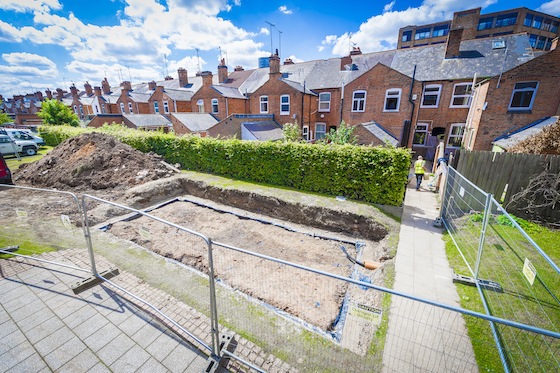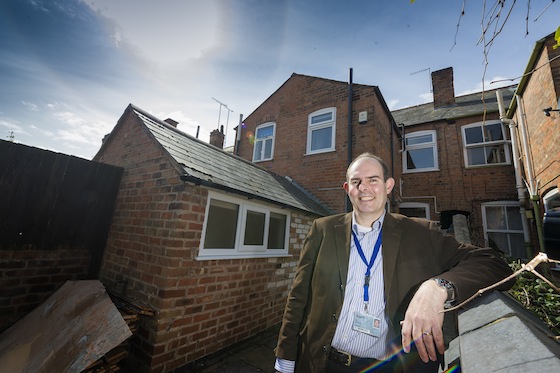A research project between academics at De Montfort University (DMU) and sustainability specialists Caplin Homes could pave the way for more affordable low and zero carbon properties in the UK.

The scheme aims to study the effectiveness of modern technology into less efficient older properties.
DMU’s Institute of Energy and Sustainable Development (IESD) will be monitoring the performance of a traditional terraced house just yards from the university’s city centre campus.
Caplin Homes’ patented heat store, the Earth Energy Bank, has been fitted outside the property along with a 3kW geoTHERM mini heat pump, designed by Vaillant, Europe’s largest heating technology manufacturer.
The EEB uses the high thermal capacity and poor conducting qualities of the earth to store heat underground. A matrix of boreholes dug in 1.5metres underneath a lawn outside the house allows the heat to be stored in the soil and re-used to heat the property.
Working in conjunction with the geoTHERM heat pump and solar panels on the roof, it means surplus energy generated during the summer warms the earth bank, which is then drawn upon to heat the house in winter. The panels also generate electricity to use in the home.
The EEB is cheaper and uses less space than traditional systems, making achieving low and zero carbon much more affordable. Its creators believe a system such as the one being trialled by DMU could be a viable option for landlords.

Dr Rick Greenough, reader in industrial sustainability, (pictured above) said: “The Earth Energy Bank concept is still relatively new but it could influence the technologies that are used in energy efficient houses of the future.
“Having a fully instrumented working model will enable us to undertake detailed research into the performance of the EEB and our students to see first-hand the latest renewable innovations and explore further applications.”
This project builds on the two years’ experience of successful operation of the Solar House, the UK’s first fully solar powered new build home. Previous installations have seen the energy store housed within a building’s footprint; however, as a retrofit project, the EEB in this instance was fitted within a plot of land at the back of the property.
The IESD has taken an academic interest in the development of the EEB since its initial installation in the Solar House. Energy flows within the house were monitored for 12 months by an MSc student, Robin Talbot.
Michael Goddard, director of Caplin Homes, said: “This project will allow us to demonstrate how the technology could work in a whole host of new build properties, especially in low rise, multi-occupancy housing developments.
“Ground source heat pumps are one of the most efficient renewable technologies available but their current applications are restricted by the lack of space for ground collectors or the cost of deep bores. The Earth Energy Bank could change all that and this installation offers us an opportunity to gain insightful data for further system modelling.”
In addition to the new energy system, the house has also been installed with new double glazed windows and doors and under floor heating.
John Bailey at Vaillant said: “Renewable technology is an area we’re hugely committed to as a business. We believe ground source systems have a great deal of potential and the Earth Energy Bank could be a real stepping stone to their more widespread adoption.”
Posted on Tuesday 24 November 2015